The 36 streets in Hanoi Old Quarter are relics of a thousand years of history, where ancient traditions and vibrant street life coexist. This famous quarter is the heart of the capital, embodying the essence of Hanoi’s history, culture, and economy. In this article, we’ll explore these fascinating streets, their origins, unique features, and much more.
The origins of the 36 streets
The history of the 36 streets in Hanoi Old Quarter dates back to the 11th century (1010). During the reign of the Ly Dynasty, Hanoi, then known as Thang Long, became the capital of the Dai Viet. With Hanoi’s growth as a political and cultural hub, the Old Quarter emerged as a vibrant center for artisans and merchants. Over time, these streets formed distinct guilds. Each focused on a different craft, such as pottery, silk, and jewelry.
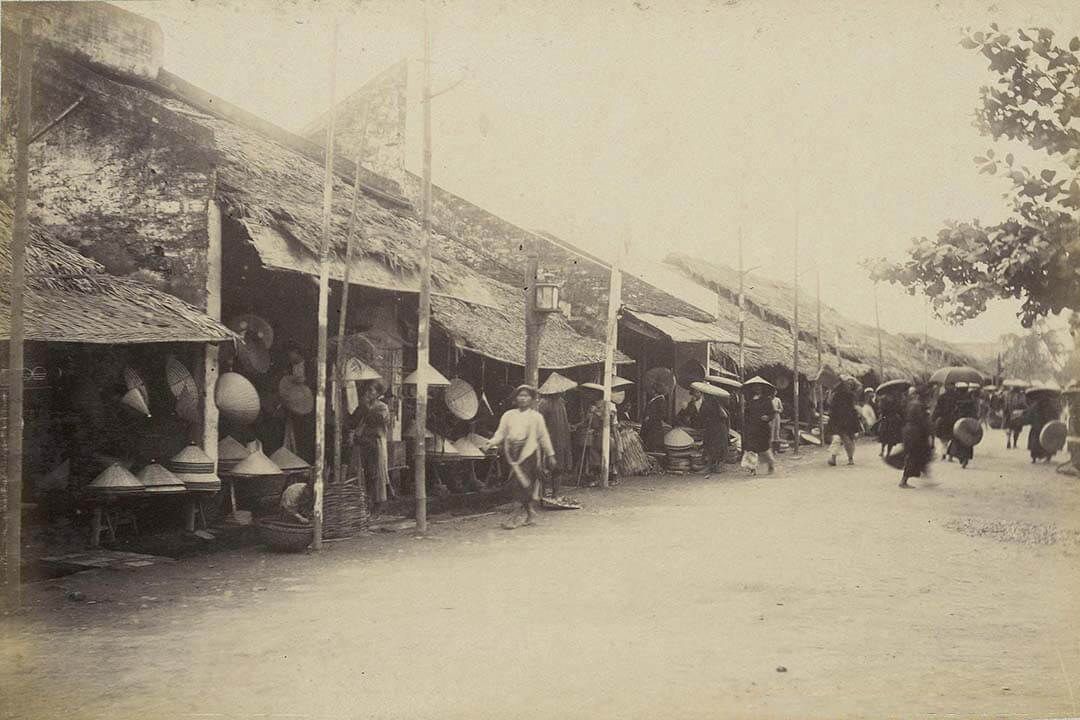
The development of the 36 streets in Hanoi Old Quarter was pivotal to the area’s rise as an economic powerhouse, with each narrow street meticulously designed to support residential living and business activities, creating self-sufficient hubs that attracted tradespeople from across the country. This strategic urban planning facilitated efficient commerce and fostered a thriving community where traditional trades and vibrant economic activity could flourish side by side.
List of 36 streets in Hanoi Old Quarter
Each street will sell a different type of goods
- Hang Buom: Sells traditional sweets, candies, and dried foods.
- Hang Ngang: A street famous for selling silk, clothing, and fabrics.
- Hang Ma: Decorative items, paper votive offerings, and ceremonial goods.
- Hang Mam: Fish sauce and fermented fish products.
- Hang Trong: Traditional art, handmade paintings.
- Hang Be: Ingredients for food preparation and dried goods.
- Hang Bo: Woven and bamboo crafts.
- Hang Bac: Silver jewelry and silverware.
- Hang Giay: Handmade paper, do paper, and calligraphy paper.
- Ma May: Ancient houses, tourist services, restaurants, and hotels.
- Dong Lac: Hand embroidery and finely crafted products.
- Hang Dao: Fabrics, silk, and traditional clothing.
- Hang Chieu: Woven mats, bamboo mats, and products made from sedge.
- Lan Ong: Herbal medicine, traditional Eastern medicine.
- Nguyen Du: (This street is not in the Old Quarter, but it’s known for literature and poetry related to poet Nguyen Du).
- Hang Lam: (This street is not part of the 36 streets in the Old Quarter).
- Dong Xuan: A large market selling various goods, from clothing to household items and food.
- Thanh Ha: Products related to rivers and fishing equipment.
- Hang Gai: Silk and silk fashion products.
- Hang Day: Rope, cords, and related products.
- Hang Che: Tea, dried tea, and fresh tea products.
- Hang Muoi: Salt and salt-related products.
- Quang Minh Dinh: (This street is not part of the 36 streets in the Old Quarter).
- Hang Duong: Sells sugar, traditional sweets, and candies.
- Hang Manh: Bamboo blinds, bamboo crafts.
- Hang Hom: Chests, cabinets, and wooden handcrafted products.
- Hang Ga: Poultry and poultry-related products.
- Hang Dong: Bronze handicrafts, bronze altar items.
- Hang Non: Traditional conical hats and various types of hats.
- Hang Vai: Fabrics, clothing, and tailoring services.
- Hang Luoc: Combs, hairbrushes, and hair accessories.
- Hang Bong: Cotton fabrics, textiles, and fashion products.
- Lo Su: Products related to pottery kilns and ceramics.
- Bac Ninh: (Not part of the 36 streets in the Old Quarter but famous for “quan ho” folk songs).
- Hang Tre: Bamboo, bamboo products, and crafts.
- Hang Voi: Lime and construction materials made from lime.
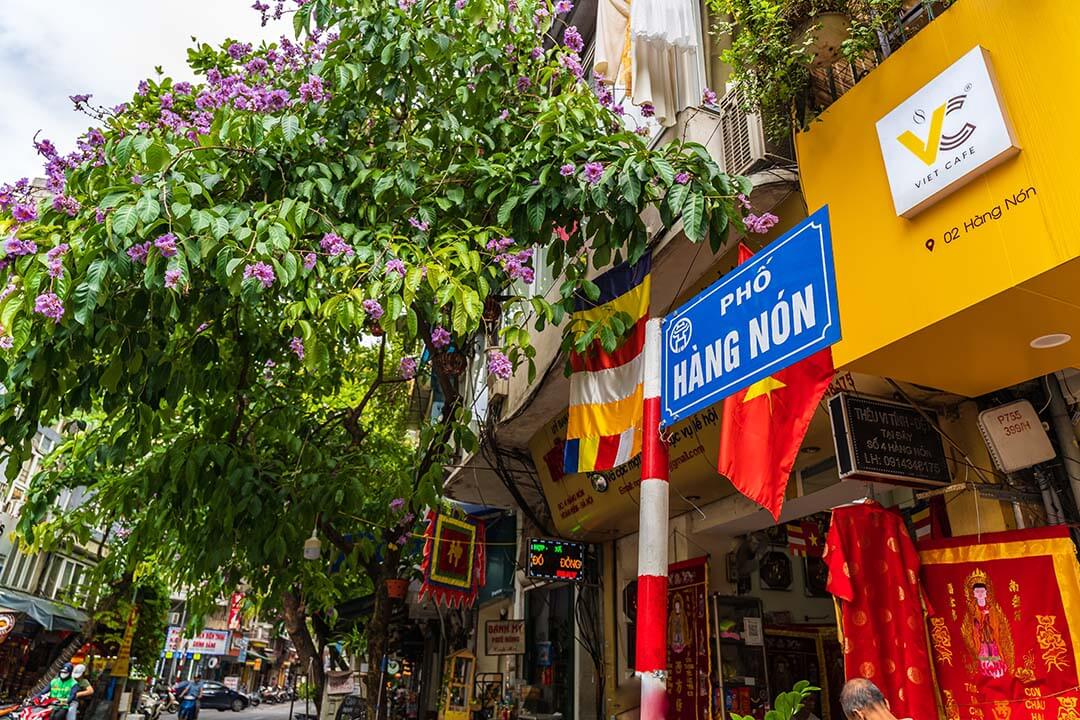
Over time, while the diversity of products on these streets has increased, each street still retains its historical significance, reflecting the Old Quarter’s rich heritage. This blend of traditional and modern commerce continues to captivate visitors and locals, preserving the unique character of the Old Quarter. The historical essence of these streets remains a fundamental part of the area’s identity and adds to the enduring charm of Hanoi’s vibrant cultural tapestry.
Highlights of the 36 streets in Hanoi Old Quarter
The 36 streets are known for their charm, bustling atmosphere, and unique blend of old and new, offering a dynamic visitor experience.
Architectural Fusion between Vietnam and France
One of the most striking features of the Hanoi Old Quarter is its architectural blend of traditional Vietnamese architecture and French colonial influences. The narrow, elongated tube houses are a signature of Vietnamese urban design, maximizing space for both business and living. Alongside these homes, the remnants of French colonial architecture can be seen in the form of balconies, facades, and public buildings, adding a European flair to the historic streets.
This blend of architectural styles enhances the visual appeal of the Old Quarter and infuses it with a unique European flair that complements its historic charm. As you wander through these eclectic streets, the seamless integration of these distinct architectural elements provides a palpable sense of stepping back in time, allowing you to witness the city’s evolution from a bustling ancient trade hub to a vibrant cultural destination that continues to captivate visitors and locals alike.
Some places still preserve French colonial architecture in the Old Quarter, such as 129 Phung Hung Street and 48 Hang Ngang Street (where President Ho Chi Minh wrote the Declaration of Independence, marking the birth of the Democratic Republic of Vietnam on August 28, 1945). Additionally, there are houses at the intersection of Hang Ngang Street and other buildings in the 36 streets in Hanoi Old Quarter that reflect this architectural style.
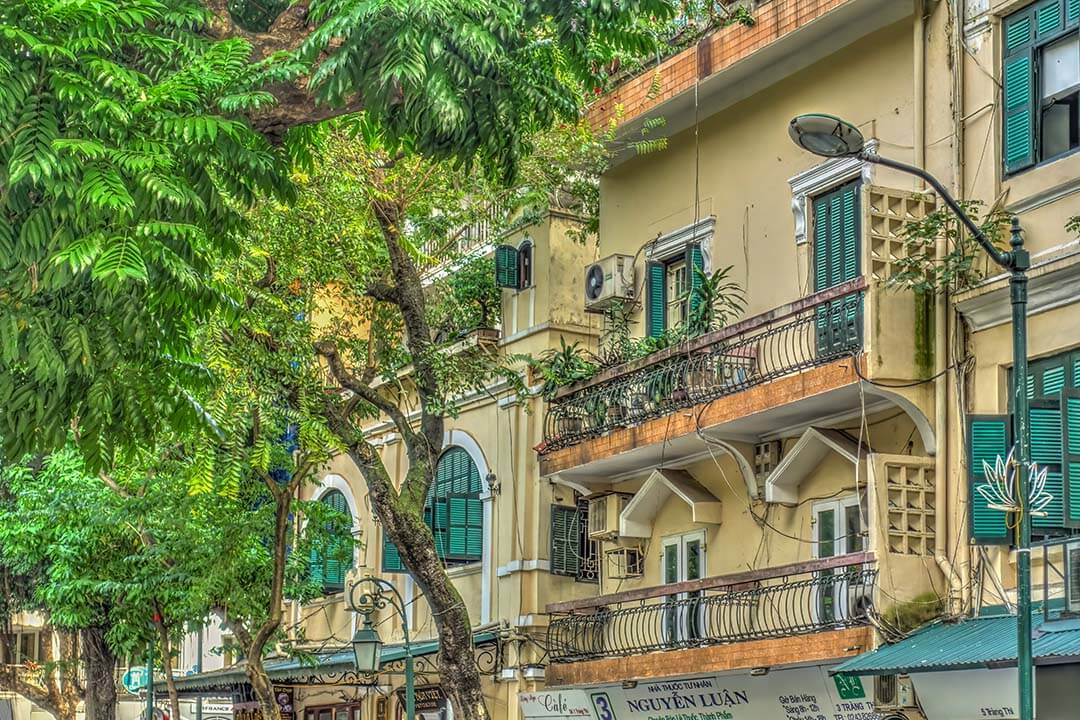
Long-standing cultural traditions
The 36 streets in Hanoi Old Quarter are not only a commercial center but also a place where cultural traditions have been preserved for centuries. Many streets still hold annual festivals and events that reflect Hanoi’s cultural heritage. For example, Hang Ma Street comes alive during the Mid-Autumn Festival, when it is adorned with colorful lanterns and traditional toys.
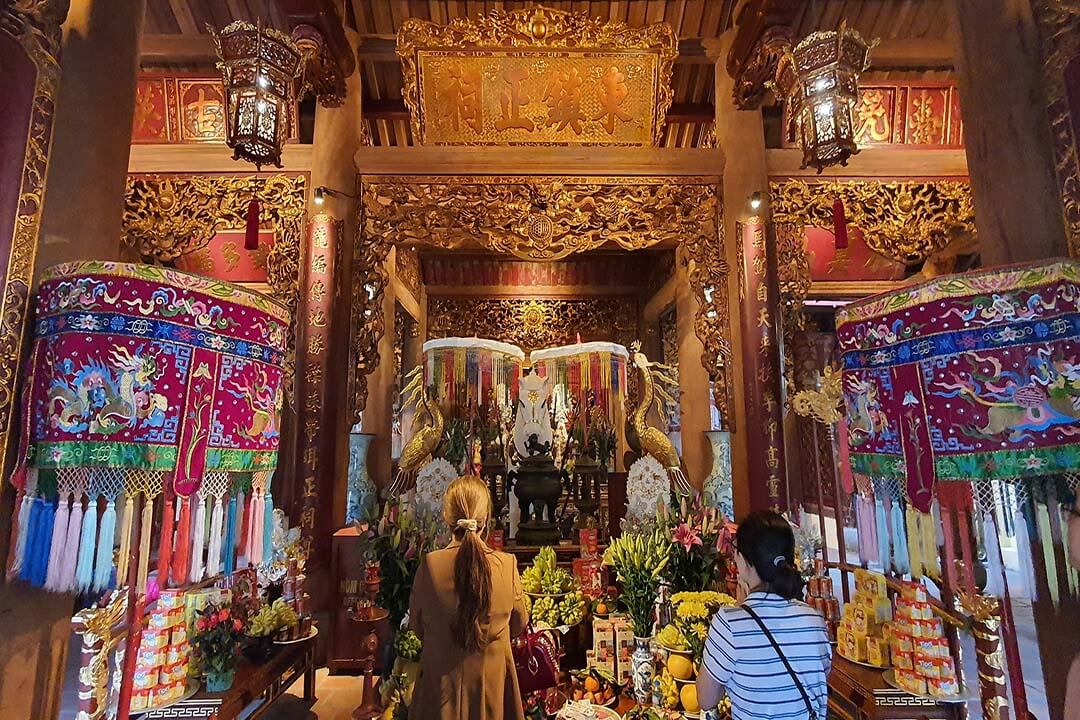
In addition to festivals, the Old Quarter is home to numerous temples and communal houses, such as the Bach Ma Temple, one of the oldest in the city. These historical sites offer insight into the spiritual and communal lives of the people who have lived in the Old Quarter for generations.
Culinary delights on every street
Food is an integral part of the Old Quarter’s identity, with each street offering a distinct culinary experience. Whether you’re craving Hanoi’s famous Phở or want to try the iconic Cha ca la vong from Hang Ca Street, the Old Quarter is a food lover’s paradise. Every corner of the Old Quarter has a delicious dish of Vietnamese from Bun cha on Hang Quat Street to Xoi on Hang Dieu Street.
This rich culinary diversity reflects the history of the 36 streets, where merchants and artisans from different regions came together, bringing their unique cooking styles with them. For visitors, exploring the food scene is one of the best ways to connect with the Vietnamese culture that permeates the streets of Hanoi’s Old Quarter.
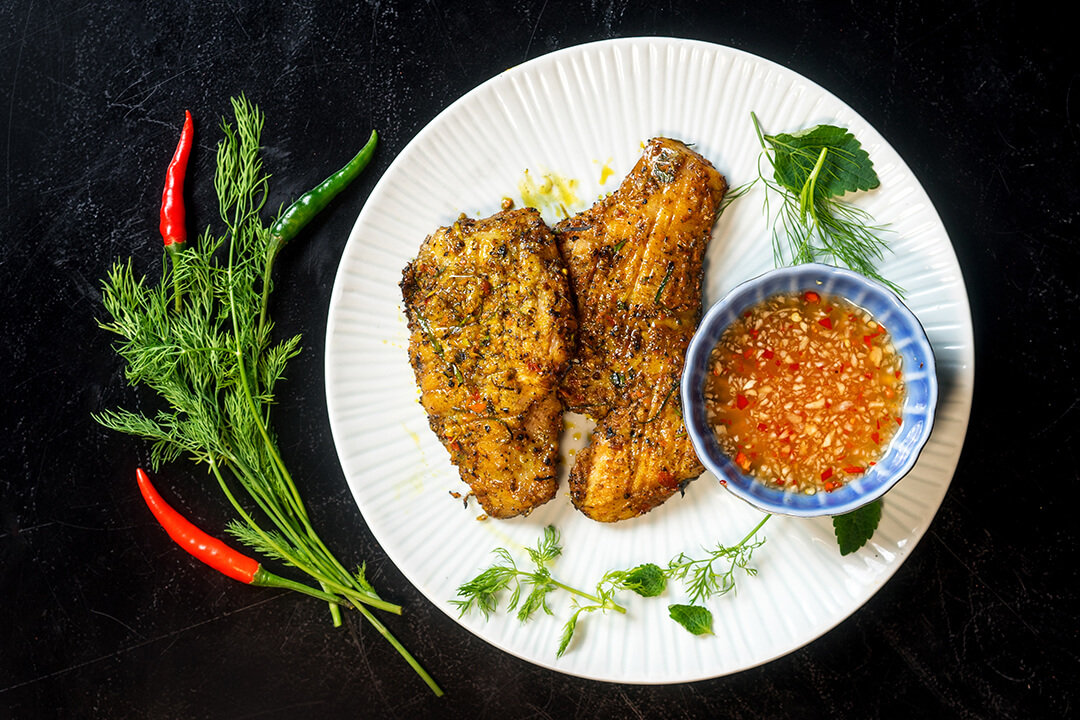
The 36 streets in Hanoi Old Quarter offer authentic look into Hanoi’s rich past, where history and culture blend seamlessly with the bustling energy of modern-day life. From its architectural wonders to its long-standing traditions and incredible food, the Old Quarter is a must-see destination for any traveler. With Vietnam Travel Tips, you can explore these ancient streets, uncover their hidden gems, and immerse yourself in the fascinating history of one of Vietnam’s most iconic neighborhoods.


